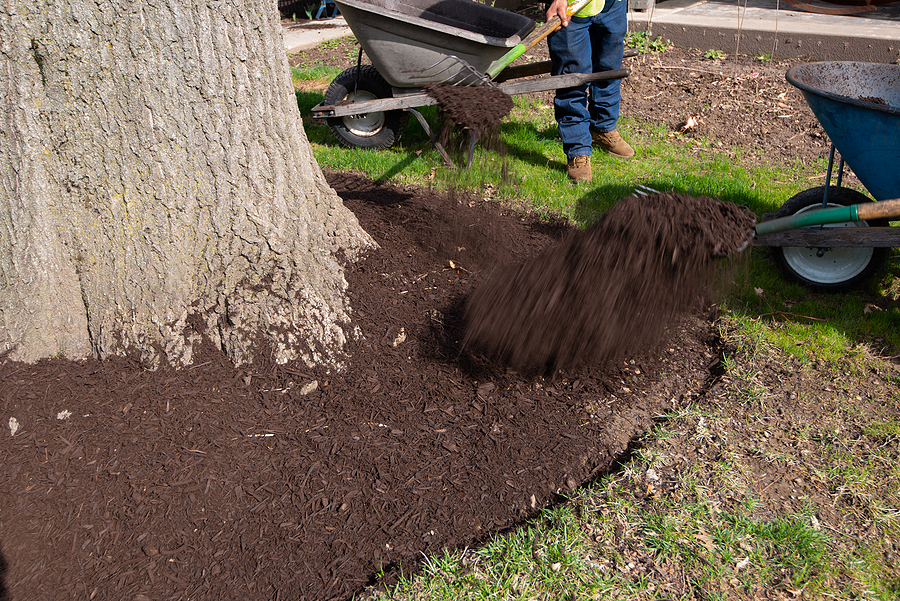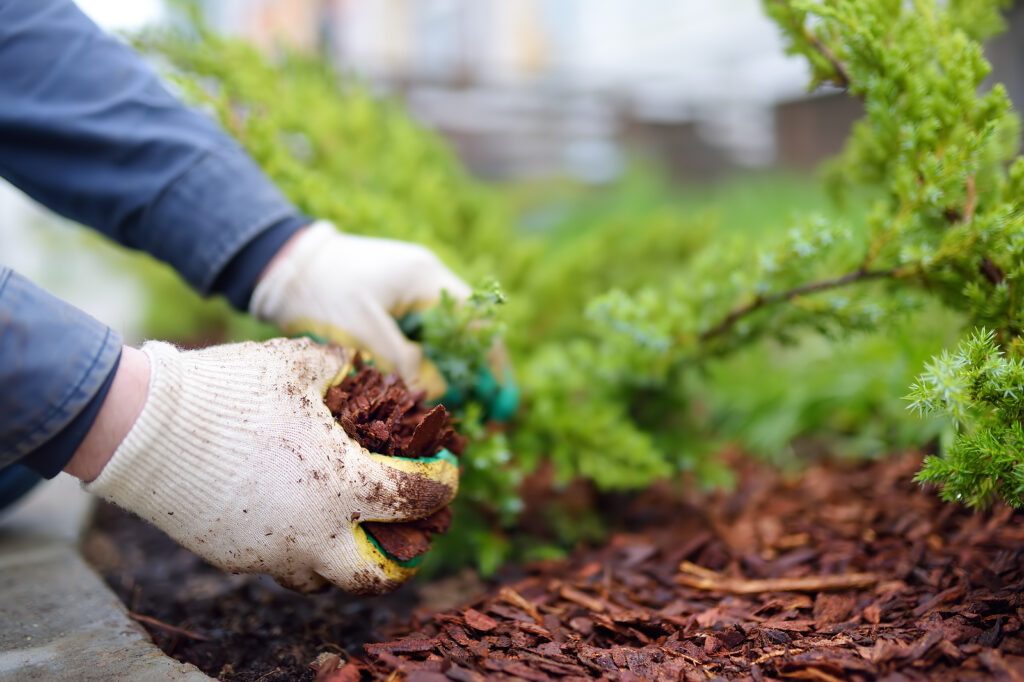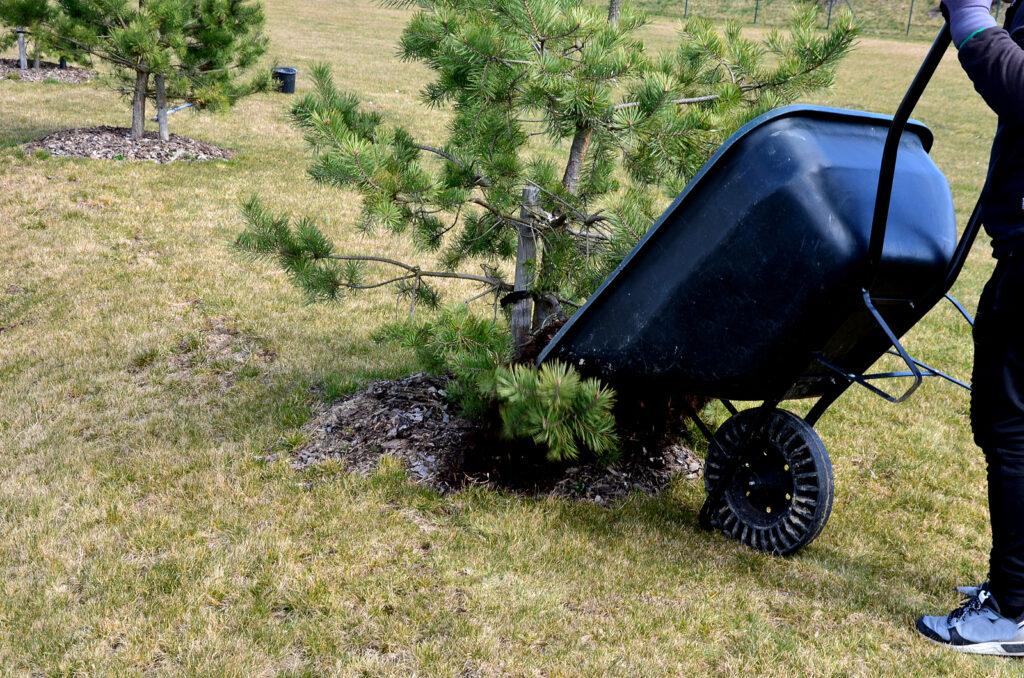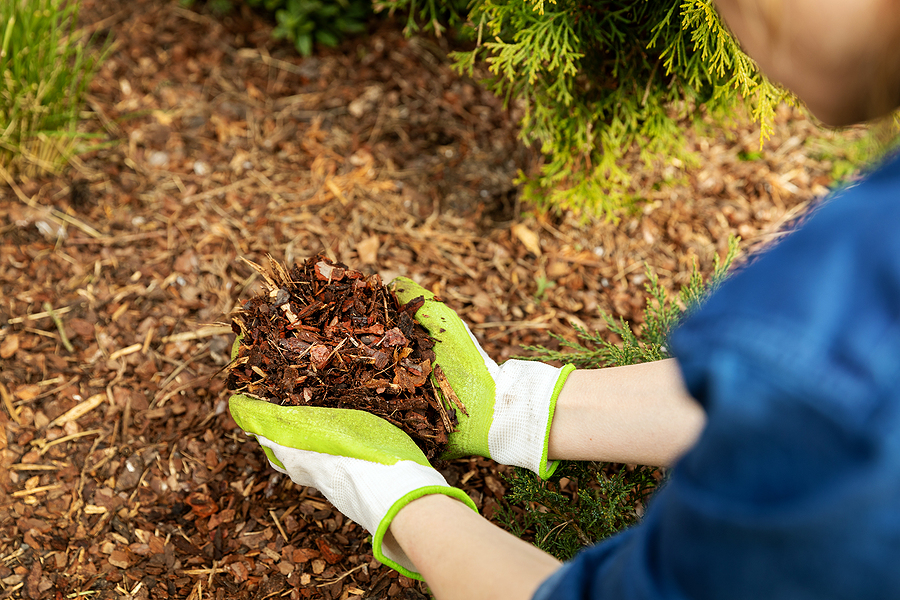As summer temperatures soar, you might be wondering how to best care for your trees. One common method is using tree mulch, a practice that brings with it a host of advantages and some disadvantages. Mulching trees can be a great way to protect them and provide nutrients in hot weather, but it also requires careful thought and execution.
In this blog, we will delve into the pros and cons of mulching around trees during the hottest time of the year. We aim to provide you with an informative guide to help you make the best decisions for your trees’ health and longevity. So, grab a cool beverage and settle in as we embark on this journey of tree care.
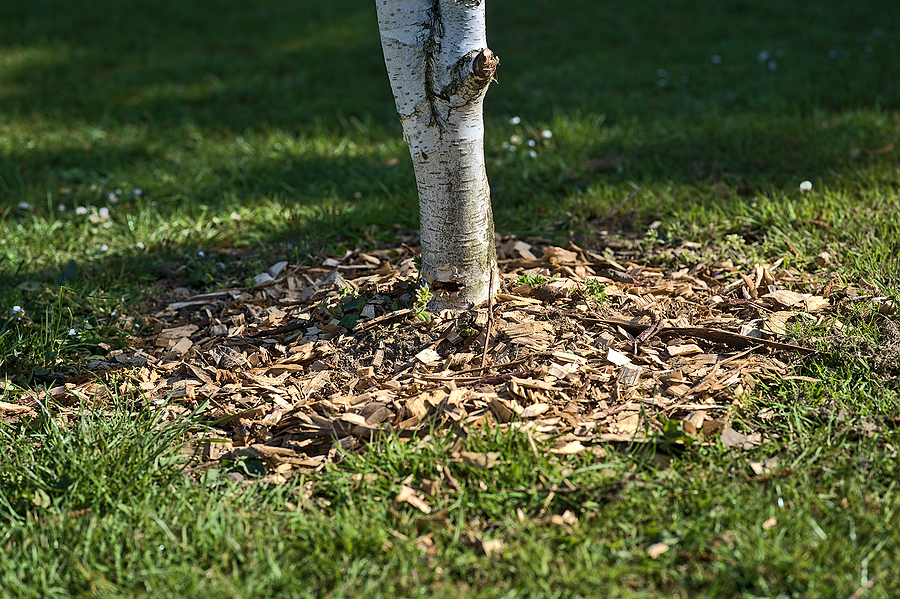
The Pros of Mulching Around Trees in Hot Weather
Why mulch around a tree? Mulching trees is a great way to keep them healthy during the summer months and beyond. It provides many benefits, including:
Improved Soil Quality: Mulch helps protect the soil from erosion and temperature changes while also providing valuable organic matter to improve its quality.
Reduced Water Loss: Mulch acts as a barrier, reducing the amount of water that evaporates from the soil and helping to keep trees hydrated during hot weather.
Increased Nutrient Retention: By trapping nutrients in the soil, mulch helps trees absorb more of them from their environment and better survive periods of drought or extreme heat.
Improved Insulation: A layer of mulch acts like a blanket, helping to protect the roots of trees from extreme temperatures.
The Cons of Mulching Around Trees in Hot Weather
While there are many benefits of choosing to mulch your trees, it’s important to consider the potential drawbacks as well:
Increased Risk of Disease and Pests: A thick layer of mulch can trap moisture, creating an ideal environment for pests and diseases to flourish.
Attraction to Animals: Mulch can be a tasty snack for animals such as deer, rabbits, or squirrels that may dig up the area around trees in search of food.
Poor Air Flow: Too much mulch can inhibit air flow around tree roots, leading to oxygen deprivation and potential damage.
3 Tree Mulching Tips for Summer
Tree mulching can be a great way to keep them healthy in hot weather, but it should be done carefully. Here are some tips to ensure that your mulching efforts don’t do more harm than good:
Use the right type of mulch. Certain types of mulch are better for trees in hot weather, such as straw or wood chips. Avoid using sawdust or shredded paper, which can create a barrier that prevents water and oxygen from getting to the roots.
Don’t over-mulch. A layer of mulch should be no more than 3 inches deep. Any deeper, and you run the risk of trapping moisture and creating an environment where diseases can flourish.
Don’t spread mulch too close to the trunk. It’s important to leave a small gap between the mulch and the trunk to ensure that air can still flow freely around it.
How to Choose the Right Mulch for Your Trees
When it comes to choosing the best type of tree mulch, there are a few important factors to consider. Start by determining what kind of environment you’re dealing with: is it hot and sunny or cool and shady? Once you know this, you can select the type of mulch most suitable for your tree’s needs. For example, organic mulches like straw or wood chips are great for hot, sunny areas, whereas bark or pine needles are better suited to cool, shady spots.
It is also important to take into account the type of tree you are dealing with and its particular needs. Some trees may require a certain type of mulch to thrive. If you aren’t sure what type of mulch is best for your tree, consult a certified arborist or tree care company for their expert advice.
In Conclusion
Mulching around trees in hot weather can be a great way to keep them healthy and protected from extreme temperatures. However, it is important to be aware of the potential drawbacks and take steps to ensure that your mulch isn’t putting your trees at risk. With proper care and maintenance, you can enjoy all the benefits of mulching without worry!
Are you trees in need of professional attention? Contact Complete Tree Care at 317-783-2518 for licensed and insured tree service in Indianapolis, Indiana. We serve residential and commercial clients with comprehensive tree care solutions.
Related Posts:
Are Insects a Threat to Tree Health During the Summer?
5 Essential Steps to Protecting Your Trees from Droughts
How to Prepare Your Trees for the Heat of Summer

